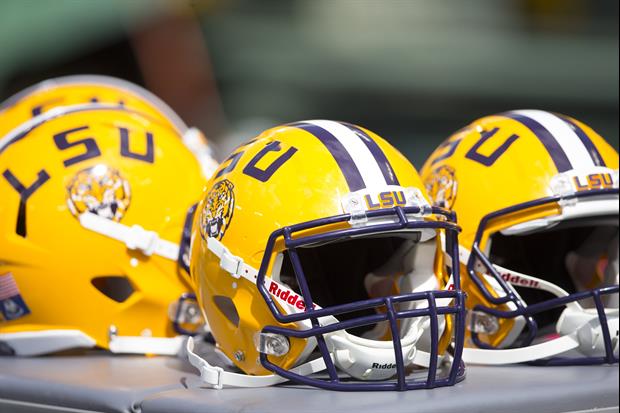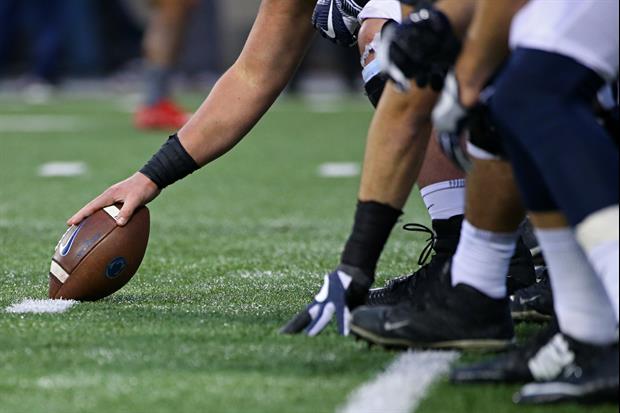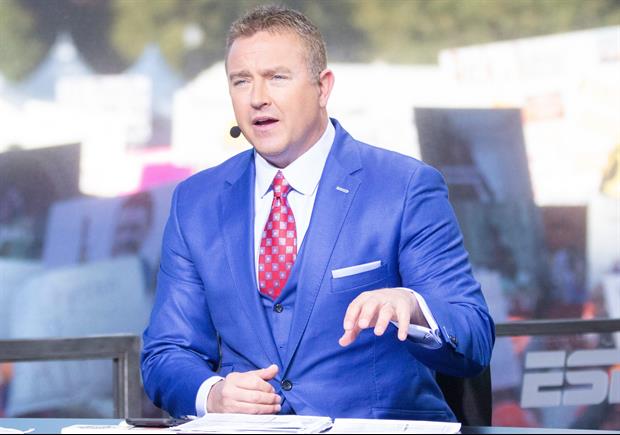- My Forums
- Tiger Rant
- LSU Recruiting
- SEC Rant
- Saints Talk
- Pelicans Talk
- More Sports Board
- Coaching Changes
- Fantasy Sports
- Golf Board
- Soccer Board
- O-T Lounge
- Tech Board
- Home/Garden Board
- Outdoor Board
- Health/Fitness Board
- Movie/TV Board
- Book Board
- Music Board
- Political Talk
- Money Talk
- Fark Board
- Gaming Board
- Travel Board
- Food/Drink Board
- Ticket Exchange
- TD Help Board
Customize My Forums- View All Forums
- Topic Sort Options
- Trending Topics
- Recent Topics
- Active Topics
JudgeHolden
| Favorite team: | Mississippi St. |
| Location: | Gila River |
| Biography: | |
| Interests: | |
| Occupation: | |
| Number of Posts: | 18566 |
| Registered on: | 1/25/2008 |
| Online Status: | Not Online |
Recent Posts
Message
re: Deputies arrest 4 in LSU student Madison Brooks case
Posted by JudgeHolden on 3/9/23 at 7:38 pm to MasterDigger
Nope.
re: Deputies arrest 4 in LSU student Madison Brooks case
Posted by JudgeHolden on 3/9/23 at 5:07 pm to clip11
Good to see admins still keeping this thread right on topic.
re: Family of LSU student Max Gruver awarded $6.1 million in damages over hazing death.
Posted by JudgeHolden on 3/9/23 at 5:01 pm to JudgeHolden
Looks like Allstate Canada lost summary judgment on its exclusions, so it is likely covering this.
re: Family of LSU student Max Gruver awarded $6.1 million in damages over hazing death.
Posted by JudgeHolden on 3/9/23 at 4:57 pm to WildBillJR
Allstate Canada was defending, right?
re: Family of LSU student Max Gruver awarded $6.1 million in damages over hazing death.
Posted by JudgeHolden on 3/9/23 at 4:56 pm to CovingtonTiger
LSU was not on the verdict form. Seems like it should have been.
re: Family of LSU student Max Gruver awarded $6.1 million in damages over hazing death.
Posted by JudgeHolden on 3/9/23 at 4:49 pm to JudgeHolden
Found the verdict form. Everyone had settled except Ryan Isto. He was apportioned 2% liability.
They can recover $122,000 on that judgment.
They can recover $122,000 on that judgment.
re: Family of LSU student Max Gruver awarded $6.1 million in damages over hazing death.
Posted by JudgeHolden on 3/9/23 at 4:45 pm to Breauxsif
I think it is 2 percent of $6.1 million.
Louisiana article 2323 (comparative fault).
I’ll look it up, but that’s what I heard.
Louisiana article 2323 (comparative fault).
I’ll look it up, but that’s what I heard.
re: How many times have you taken someone to court?
Posted by JudgeHolden on 3/9/23 at 4:43 pm to Billy Blanks
A lot.
re: Bond set at $42,500 for New Orleans man accused of shooting teen who broke into his car
Posted by JudgeHolden on 3/9/23 at 4:41 pm to MorbidTheClown
I think the fact that he seems to have hidden the rifle does not help him.
re: Is there an update on missing 40 year old man?
Posted by JudgeHolden on 3/8/23 at 11:37 pm to tigerinthebueche
quote:
That woke POS ain’t acknowledging the death of any white person. Have you heard him mention Allie Rice? Or Madison Brooks?
Sheriff has Madison Brooks, not BRPD.
re: Saturday Night Friday Story: Hale Boggs Disappears in the Alaska Triangle-50 years later
Posted by JudgeHolden on 3/5/23 at 7:13 am to RogerTheShrubber
Jonz had 17,000 hours and wrote for Flying.
re: Saturday Night Friday Story: Hale Boggs Disappears in the Alaska Triangle-50 years later
Posted by JudgeHolden on 3/5/23 at 5:10 am to RogerTheShrubber
quote:
You'd think a prominent pilot would have no issues with a pass he was very familiar with, but weird things happen.
The pass is 400 msl with 6000 msl mountains on each side. A helicopter turned back that day because it was slogged in.
re: Saturday Night Friday Story: Hale Boggs Disappears in the Alaska Triangle-50 years later
Posted by JudgeHolden on 3/5/23 at 2:47 am to TutHillTiger
This article seems useful:

Plane and Pilot
Tl;dr. Marginal weather with icing. Bold pilot. Lots of places to crash where they wouldn’t find you.
quote:
Here’s what we know: On Oct. 16, 1972, at just before 9 a.m., a Cessna 310C, its registration number, N1812H, laid out in 10-inch tall block letters across the lower margin of its vertical tail, departed from Anchorage International Airport’s Runway 24R (since renumbered as 25R) under gray skies and into what was, at best, marginal flying weather.
The plane seemed fine. The evening before, the pilot had flown the light twin-engine Cessna down from Fairbanks just for this flight. Fresh out of its regular 100-hour maintenance check and fully fueled up again in Anchorage for the charter flight, the 1959 Cessna 310C was in game shape for the planned 575-mile jaunt down to Juneau. No one took special notice. It was just a small plane with four men aboard heading down the coast, just as thousands of small planes had done before and thousands more have done since.
quote:
The pilot, himself a remarkable character, went by the name Don Jonz, though that wasn’t his original name. Jonz, who was 38, had changed his name earlier in his life to distinguish himself from the many thousands of other “Don Joneses” in the world. Jonz (pronounced like “Johns”) owned not only the Cessna twin he was flying but also the small charter company, which he had grandly called Pan Alaska Airways. It was providing the flight free of charge, he reportedly told friends.
quote:
Ten minutes after the Cessna lifted off from Anchorage, Jonz radioed the FAA Flight Service Station in Anchorage to file a flight plan. The pilot told the specialist, with whom he had spoken on the phone earlier in the morning to get a weather update, that the plan was to fly V-317 south all the way down to Yakutat, which is most of the way to Juneau, and then direct from there.

quote:
Regardless, the flight, for however long it lasted, was officially a Visual Flight Rules affair, though Jonz, based on his writings about avoiding icing conditions, wouldn’t have hesitated to jump on the gauges to stay out of or get out of trouble by flying in the clouds for a bit, and by all accounts he would have done so expertly, had the need arisen. That said, the risk of hand flying in actual conditions with probable strong turbulence and possible moderate icing is very high.
quote:
What role the weather played in the loss of N1812H, however, will likely will remain a mystery. In its report, the NTSB determined that the day’s weather along the route of flight was “not conducive” to VFR flight, though it’s not the forecast or weather reports that determine what VFR is but the in-flight visibility. Again, what the weather looked like to Jonz is a detail we’ll never know. Regardless, the NTSB stopped short of saying that Jonz would’ve violated any cloud clearance or visibility rules along whatever segment of the route of flight he wound up completing before some kind of disaster struck, either fire or ice based.
Plane and Pilot
Tl;dr. Marginal weather with icing. Bold pilot. Lots of places to crash where they wouldn’t find you.
re: Saturday Night Friday Story: Hale Boggs Disappears in the Alaska Triangle-50 years later
Posted by JudgeHolden on 3/5/23 at 12:22 am to The Boat
quote:
T Wayne Parent
Loved him.
re: Deputies arrest 4 in LSU student Madison Brooks case
Posted by JudgeHolden on 3/4/23 at 1:16 pm to TigerFred
quote:
Let’s keep this thread on topic.
Glad you’re staying on top of that.
re: Woke, White-male, crying and in shambles about having to go to work...
Posted by JudgeHolden on 3/4/23 at 2:59 am to mauser
quote:
Where does he work? Starbucks?
I doubt he works anywhere, now.
re: Kouri-Vini: The return of the US' lost language
Posted by JudgeHolden on 3/3/23 at 5:30 pm to mdomingue
House rockin music, baw!
We had Daddy Cool Breeze on KSLO.
We had Daddy Cool Breeze on KSLO.
re: Kouri-Vini: The return of the US' lost language
Posted by JudgeHolden on 3/3/23 at 5:29 pm to dandyjohn
quote:
It's not, it's just a poppy version of "Cajun" music which itself doesn't have a firm definition. Zydeco took the elements that define cajun music, the tempo, the accordion, the washboards, the refrains, and simplified it into a contemporary pop format - verse-chorus-verse-chorus-bridge-chorus. That's all it is. To claim it's some deep ancestral music is more than a stretch.
I don’t really agree.
If you baws really want to know about zydeco, listen to JB and MC on Zydeco est pas Sale, tomorrow at 8 am on KRVS.
Then listen to Marche Matin on Sunday and hear the difference between zydeco and Cajun.
re: Kouri-Vini: The return of the US' lost language
Posted by JudgeHolden on 3/3/23 at 5:16 pm to mdomingue
Clifton Chenier, the king of zydeco, was born in Leonville. I love this part of the story:
quote:
Chenier moved to Port Arthur in 1946 to work on the labor gang at the Gulf refinery. During his lunch break, Chenier would often play the accordion for his coworkers. The first frottoir, or metal rubboard, was made for Clifton and Cleveland Chenier by Willie Landry. The three men worked together at Gulf Refinery in the 1940s. One day, Cleveland drew the type of musical instrument he wanted in the dirt, and Landry, a Cajun metal craftsman, created the metal rubboard for the brothers. Landry's son still makes rubboards. Legend has it that the money from tips was better than his salary, so Clifton quit the labor gang to start playing local venues.
re: Investigators When they KNEW Murdaugh lied (Page 112)
Posted by JudgeHolden on 3/3/23 at 4:33 pm to CrimsonTideMD
quote:
former attorney
And a former prosecutor, right?
re: Kouri-Vini: The return of the US' lost language
Posted by JudgeHolden on 3/3/23 at 2:04 pm to el Gaucho
quote:
the butt thing guy
Horace Trahan, I think.
Popular
 0
0












